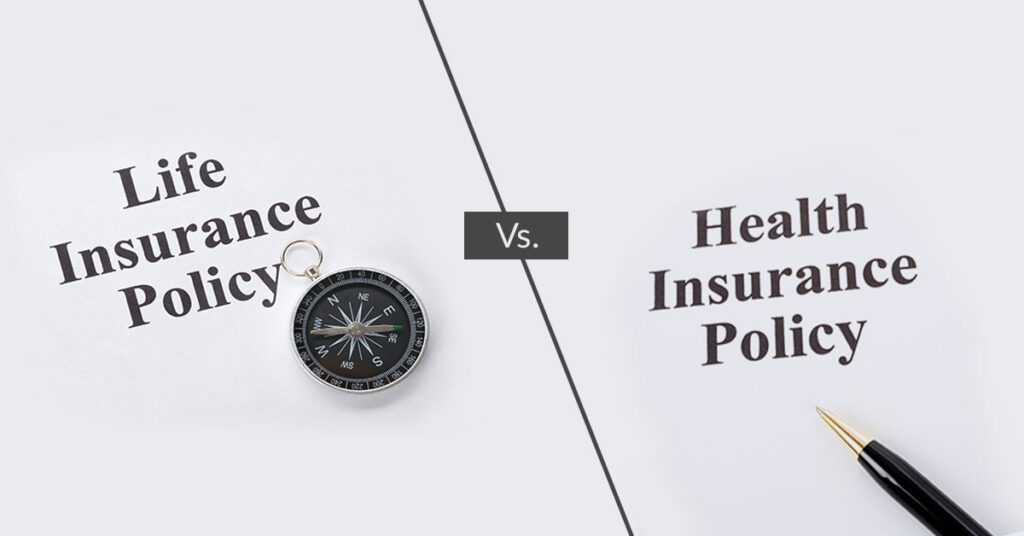Best Guide for Life Insurance Vs Health Insurance – GlobalFinMate
When planning your financial future and safeguarding your loved ones, insurance plays a critical role. Among the various types available, life insurance and health insurance are two of the most common yet often confused products. Understanding the real difference between these two is essential to make informed decisions that best protect your financial well-being and provide security during unpredictable times.
What Is Life Insurance?
Life insurance is a contract between you and an insurer that guarantees a sum of money (called the death benefit) will be paid to your designated beneficiaries upon your death. It’s designed to provide financial security for your family, dependents, or business partners after you pass away.
Key Features of Life Insurance:
- Purpose: Provides a financial safety net for your loved ones after your death.
- Payout: Lump sum payment (death benefit) to beneficiaries.
- Types: Term life (coverage for a fixed period) and whole life or permanent life (coverage for life with investment/savings element).
- Benefits: Helps cover funeral costs, debts, mortgage, children’s education, or income replacement.
- Premiums: Paid regularly, varies with age, health, and policy type.
What Is Health Insurance?
Health insurance covers medical expenses incurred from illnesses, injuries, or preventive care. It ensures that you get access to timely and affordable healthcare without bearing the full financial burden yourself.
Key Features of Health Insurance:
- Purpose: Protects against high medical costs.
- Coverage: Hospitalization, surgeries, doctor visits, medications, diagnostic tests.
- Types: Individual, family floater, critical illness policies, and sometimes wellness plans.
- Benefits: Reduces out-of-pocket expenses for health-related issues, helps with cashless treatment at network hospitals.
- Premiums: Paid periodically, influenced by age, health condition, coverage limit, and add-ons.
Why Both Are Important But Serve Different Needs
While they both fall under the insurance umbrella, life and health insurance cover different risks and financial needs.
| Aspect | Life Insurance | Health Insurance |
|---|---|---|
| Primary Goal | Financial protection for dependents after death | Coverage of medical expenses during your lifetime |
| Benefit Type | Lump sum death benefit paid to family or nominee | Reimbursement or cashless coverage for hospitalization and medical treatment |
| When Payout Occurs | After the policyholder’s death | When insured medical expenses arise |
| Coverage Period | Fixed term or lifelong | Usually annual renewal based |
| Financial Security | Income replacement, debt payoff, legacy | Avoids financial drain from medical bills |
| Premium Influence | Based on age, health, lifestyle habits | Age, pre-existing conditions, sum insured |
Situations Where Life Insurance Is Essential
- If you are the primary income earner and want to protect your family’s financial future
- To ensure children’s education and marriage expenses are covered even if you are not there
- Paying off outstanding debts, mortgages, or loans after your demise
- Estate planning and leaving a legacy
Situations Where Health Insurance Is Critical
- To cover hospitalization and treatment costs during illness or accident
- Managing chronic or critical illnesses affording expensive healthcare
- Accessing quality care without worrying about financial constraints
- Cashless treatment options at empaneled hospitals
Can One Replace the Other?
No. Life insurance and health insurance complement each other but cannot substitute one another. Life insurance cannot cover your medical bills while alive, and health insurance does not provide financial support to your family after your death.
How to Choose the Right Coverage?
- Assess Your Needs: Evaluate your family’s financial dependence on you and your current health expenses.
- Consider Your Budget: Premiums for both should fit within your financial plan.
- Use Both for Comprehensive Protection: Ideally, have health insurance for medical coverage and life insurance for long-term family security.
- Check Policy Features: Look for add-ons or riders like critical illness cover or waiver of premium.
- Review Regularly: Life stages and health conditions change; keep updating your coverage accordingly.
Conclusion
Understanding the real difference between life insurance and health insurance empowers you to build a robust insurance portfolio suited to your unique needs. They serve complementary roles—life insurance safeguards your family’s future in your absence, while health insurance shields you from the financial impact of medical emergencies. For holistic financial protection in 2025 and beyond, having both types of insurance is the prudent path.










